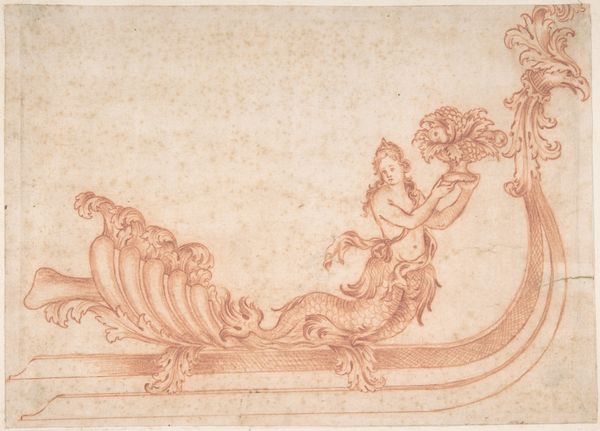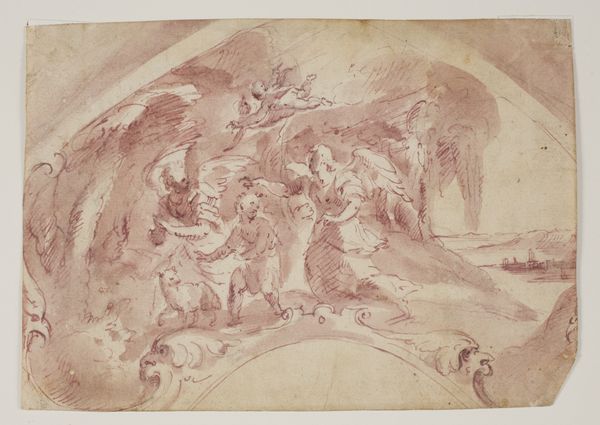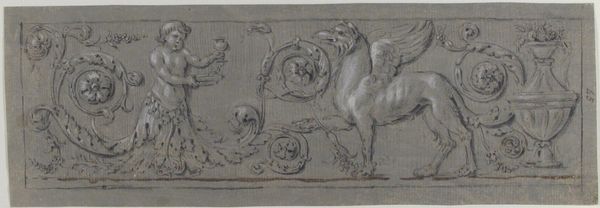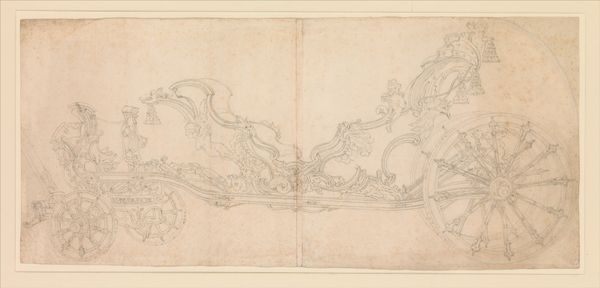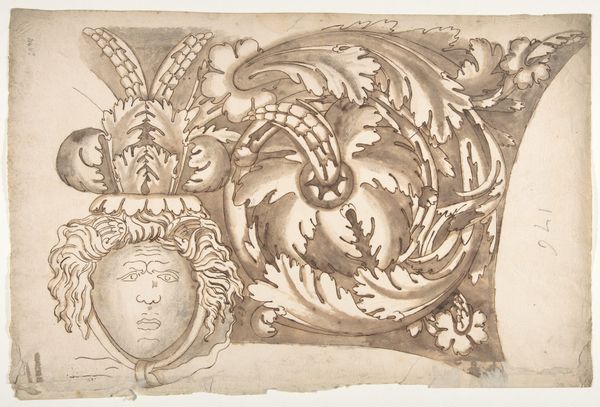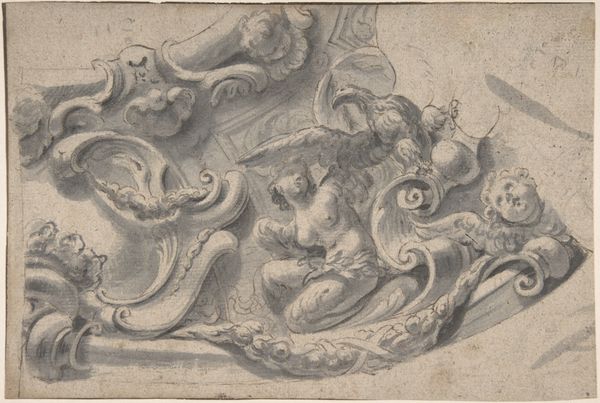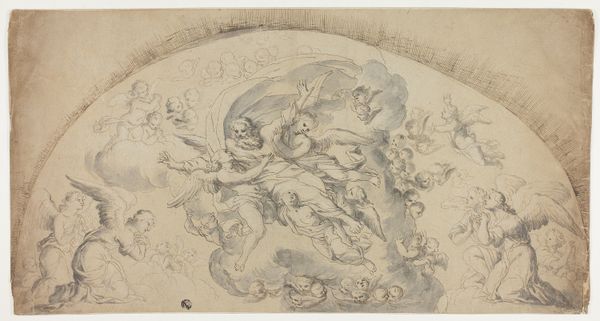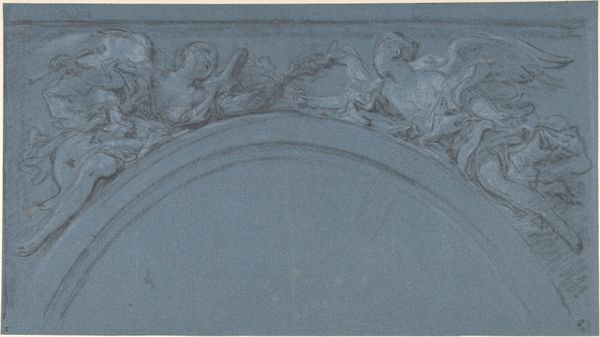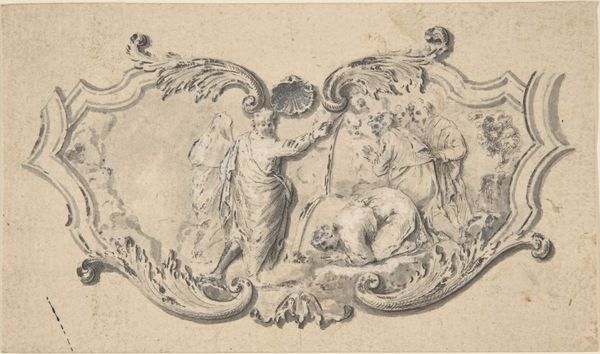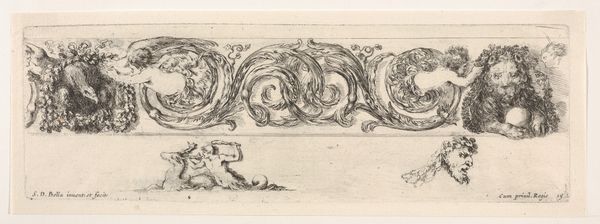
drawing, ornament, print, pencil
#
drawing
#
ornament
# print
#
pen sketch
#
figuration
#
pencil
#
history-painting
Dimensions: sheet: 6 7/8 x 16 13/16 in. (17.5 x 42.7 cm)
Copyright: Public Domain
Curator: At first glance, there's something very classical and subdued about this frieze design. It's all soft lines and greys, almost like looking at a faded dream. Editor: Exactly. Here we have a work titled "Design for a Decorative Frieze," created sometime between 1820 and 1855 by an anonymous artist. What interests me is how this drawing, using pencil, pen, and perhaps some preliminary print work, presents us with an interesting commentary on class and aesthetics in the 19th century. Friezes were, of course, architectural elements used to denote luxury and power, usually for the elites. Curator: I find the contrast between the lively figures and animals, like the prancing horse and powerful lion, and the muted palette really fascinating. It's a study in dynamic potential held in check by the artist’s chosen medium and subdued tones. I wonder about the artist's intent? Was this intended to be executed in stone, perhaps? Editor: Well, by examining its materiality—the choice of paper and pencil—we see the artist perhaps democratizing the means of production. Anyone could theoretically replicate this design, albeit on a different scale and material, of course. The availability of these materials made artistic expression more accessible across classes. Curator: I do wonder about the labor involved in scaling this up to become a true architectural frieze, how the physical exertion and craft required for carving or casting it would shape its meaning. Editor: And, considering that labor, it's critical to examine who these artisans were. How would race and gender shape the experience of the workers responsible for physically bringing designs like this into the world? It makes you question who gets to be represented in history. Curator: A pertinent point. And even here, in this drawing, we see mostly idealized figures, perpetuating a very specific visual language about power and beauty. Editor: Precisely! This piece prompts us to question what narratives are celebrated and which are actively erased within this decorative language. It's also fascinating to see that ornament could at once signal authority and become a source of empowerment. Curator: Looking again at the frieze, I appreciate how a simple pen and pencil sketch offers so much food for thought about power dynamics and modes of production. Editor: It's a small drawing with the potential to start some pretty big conversations about art, labor, and society.
Comments
No comments
Be the first to comment and join the conversation on the ultimate creative platform.
